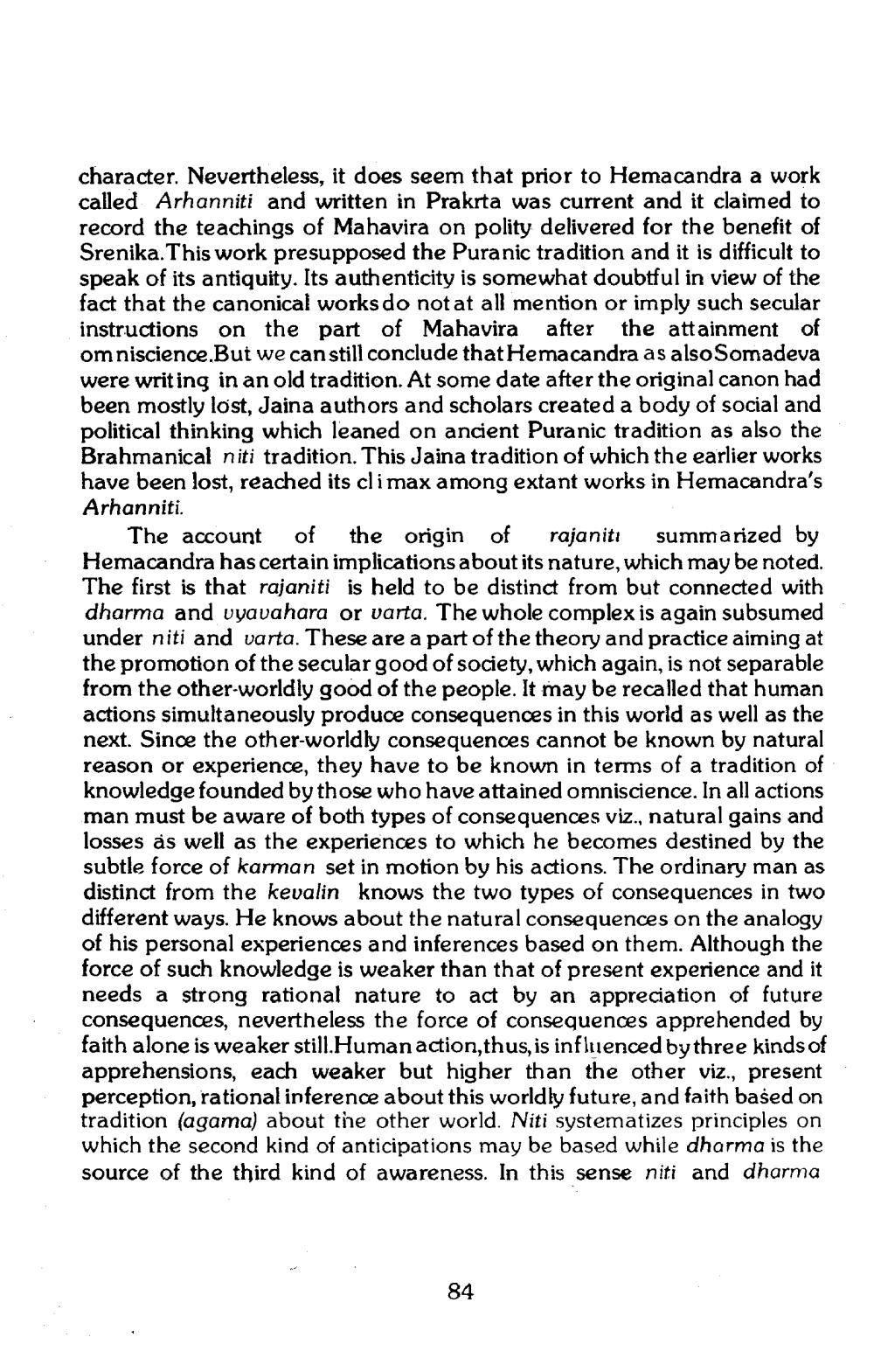________________
character. Nevertheless, it does seem that prior to Hemacandra a work called Arhanniti and written in Prakrta was current and it claimed to record the teachings of Mahavira on polity delivered for the benefit of Srenika. This work presupposed the Puranic tradition and it is difficult to speak of its antiquity. Its authenticity is somewhat doubtful in view of the fact that the canonical works do not at all mention or imply such secular instructions on the part of Mahavira after the attainment of omniscience.But we can still conclude that Hemacandra as also Somadeva were writing in an old tradition. At some date after the original canon had been mostly lost, Jaina authors and scholars created a body of social and political thinking which leaned on ancient Puranic tradition as also the Brahmanical niti tradition. This Jaina tradition of which the earlier works have been lost, reached its climax among extant works in Hemacandra's Arhanniti.
The account of the origin of rajaniti summarized by Hemacandra has certain implications about its nature, which may be noted. The first is that rajaniti is held to be distinct from but connected with dharma and vyavahara or varta. The whole complex is again subsumed under niti and varta. These are a part of the theory and practice aiming at the promotion of the secular good of society, which again, is not separable from the other-worldly good of the people. It may be recalled that human actions simultaneously produce consequences in this world as well as the next. Since the other-worldly consequences cannot be known by natural reason or experience, they have to be known in terms of a tradition of knowledge founded by those who have attained omniscience. In all actions man must be aware of both types of consequences viz., natural gains and losses as well as the experiences to which he becomes destined by the subtle force of karman set in motion by his actions. The ordinary man as distinct from the kevalin knows the two types of consequences in two different ways. He knows about the natural consequences on the analogy of his personal experiences and inferences based on them. Although the force of such knowledge is weaker than that of present experience and it needs a strong rational nature to act by an appreciation of future consequences, nevertheless the force of consequences apprehended by faith alone is weaker still.Human action,thus, is influenced by three kinds of apprehensions, each weaker but higher than the other viz., present perception, rational inference about this worldly future, and faith based on tradition (agama) about the other world. Niti systematizes principles on which the second kind of anticipations may be based while dharma is the source of the third kind of awareness. In this sense niti and dharma
84




